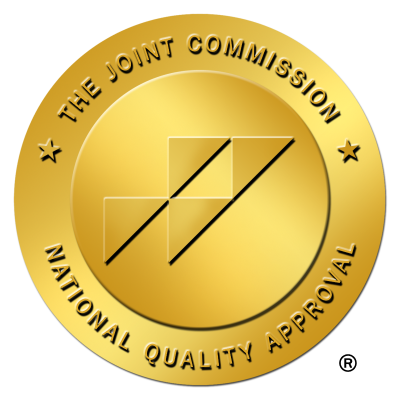Choosing a Rehab Center: What to Look For

Key Takeaways
- Prioritize accredited facilities with CARF or Joint Commission credentials that demonstrate proven quality standards and ongoing accountability
- Demand evidence-based treatment including CBT, MAT, and dual diagnosis care backed by peer-reviewed research, not just marketing claims
- Use a structured decision framework with weighted criteria (40% accreditation, 35% program depth, 25% staff qualifications) to evaluate options objectively
- Plan comprehensive resources including insurance verification, realistic budgets for direct and indirect costs, and family preparation for their support roles
- Ensure seamless aftercare planning with alumni programs, ongoing therapy access, and relapse prevention strategies that extend beyond primary treatment
Understanding Key Criteria for Choosing Rehab Center Selection
When choosing a rehab center, you're making a decision that shapes your future—and it's perfectly normal to feel overwhelmed. As someone who's guided hundreds through this process, I'd stake my reputation on these three benchmarks: verified accreditation (like CARF or Joint Commission),1 truly evidence-based therapies, and integrated support services.
Focus on these: each determines long-term recovery outcomes and sets reputable addiction treatment apart from the rest. Every step you take in evaluating these pillars is a genuine win.
Recognizing the Importance of Accreditation
Accreditation is your strongest safeguard when choosing a rehab center. Credentials from the Joint Commission or CARF signal a facility holds itself to the highest standards, surpassing minimum licensing to undergo rigorous, independent review.1
These organizations evaluate everything—staff expertise, safety protocols, program effectiveness—to ensure lasting, evidence-based care. Prioritize treatment centers that display up-to-date accreditation and confidently walk you through how they monitor and ensure consistent, high-quality addiction treatment.
Evaluating Accreditation Standards in Treatment
When evaluating treatment facilities, dig into what their accreditation truly means for your recovery journey. CARF emphasizes personalized, results-driven care by holding centers accountable for tracking outcomes and customizing treatment plans.
The Joint Commission sets strict benchmarks for safety, staff qualifications, and medication protocols—all verified through in-depth, triennial onsite evaluations.1 Rehab centers serious about your success will share how these quality standards set them apart. Choosing a rehab center with this level of oversight is a concrete step toward lasting recovery.
How Accreditation Impacts Quality of Care
Accreditation isn't just a rubber stamp—it's your assurance that a rehab center pairs clinical expertise with real accountability. Accredited centers must follow strict quality benchmarks, train staff continuously, and deliver care rooted in proven protocols—requirements that unaccredited options just don't meet.1
This means fewer treatment gaps, stronger safety practices, and authentic reporting on your progress—giving you clarity and confidence when choosing a rehab center for long-term success.
Ethical and Regulatory Considerations for Applicants
Choosing a rehab center is about more than clinical excellence—it's about trusting your wellbeing to a program that puts your rights, privacy, and safety first. The most ethical facilities uphold strict HIPAA guidelines to guard your health information, require transparent billing, and maintain honest, unmanipulated reporting on recovery outcomes.2
Insist on centers that conduct regular licensing checks for staff, follow state-specific treatment protocols, and report safety incidents transparently. These rigorous practices protect you, especially during moments when decision-making feels hardest.
Prioritizing Evidence-Based and Integrated Therapies
Prioritizing evidence-based therapies when choosing a rehab center sets a foundation for real, measurable progress. Research-backed methods such as Cognitive Behavioral Therapy (CBT), Medication-Assisted Treatment (MAT), and Dialectical Behavior Therapy (DBT) consistently lead to better long-term recovery outcomes compared to unverified approaches.2
For anyone juggling addiction and mental health challenges, integrated programs that treat both issues at once are proven to be much more effective. Insist on a treatment center where the team can explain—clearly and confidently—how their clinical approach is grounded in scientific research, not just testimonials. Your success deserves this level of care.
Exploring Evidence-Based Modalities for Recovery
When you're choosing a rehab center, look closely at the therapies offered—your confidence in recovery should rest on proven practices. Cognitive Behavioral Therapy (CBT) is widely recognized by leading clinicians for helping you recognize and change the thoughts behind substance use; it's a staple of evidence-based addiction treatment.2
Dialectical Behavior Therapy (DBT) builds your skills for managing emotions and stress, while Medication-Assisted Treatment (MAT) combines counseling with approved medications to reduce relapse risk and manage withdrawal. Ask each rehab center about therapists' credentials, therapy frequency, and exactly how these treatments fit together for your personal care plan.
The Value of Dual Diagnosis and Holistic Programs
When choosing a rehab center, holistic and dual diagnosis care isn't just a bonus—it's essential. About 60% of individuals facing addiction also battle co-occurring mental health symptoms.2
Truly integrated programs deliver simultaneous substance use and mental health treatment, which research links to greater recovery stability and fewer relapses. Ask every facility if licensed clinicians customize plans for anxiety, PTSD, or depression and if they blend traditional therapy with practices like mindfulness or nutrition support. You deserve a recovery approach that openly addresses your whole self.
Identifying Specialized and Experiential Therapy Options
When choosing a rehab center, specialized therapy options can fuel meaningful progress, especially if you've struggled with traditional methods or complex trauma. Experiential therapies—like art, music, and equine-assisted programs—offer pathways to healing when words fall short.
Real-world options such as adventure or wilderness therapies build coping skills and self-assurance while addressing addiction triggers in realistic environments. Ask the center about staff expertise and how these experiential therapies work alongside cognitive behavioral practices to round out your recovery. You deserve effective, flexible approaches tailored to your life experience.
Assessing Care Coordination and Support Services
Successful recovery depends not just on therapy, but on strong care coordination that truly looks out for you at every stage. When choosing a rehab center, prioritize facilities with case managers who connect medical staff, therapists, and family—so your care never falls through the cracks.5
The best treatment centers smooth every step by assisting with insurance, arranging transportation, and planning your discharge as early as week one. You deserve a team that keeps you supported, informed, and empowered—right through your transition home.
Aftercare Planning and Relapse Prevention Strategies
Creating an actionable aftercare plan is one of the most important steps you'll take when choosing a rehab center. Effective facilities begin mapping out your relapse prevention strategy early—pinpointing what triggers you, outlining real-life coping skills, and building emergency protocols tailored to your journey.5
A strong aftercare program links you with ongoing therapy, peer support, and alumni communities. This support network dramatically strengthens your confidence and reduces setbacks—remember, you don't have to face recovery alone.
Family Programming and Community Supports
When choosing a rehab center, recognize the vital role family and community programs play in sustainable recovery. Quality facilities offer family therapy sessions, educational workshops, and group support to rebuild trust and teach practical strategies for healthier relationships.
These approaches equip your loved ones to support you—and themselves—through the toughest transitions. Community supports like alumni networks and peer groups help you stay connected long after treatment, reinforcing every positive change you make.5 Every participant's progress is a meaningful victory.
Transport, Wellness, and Client-Centered Approach
When choosing a rehab center, practical supports like transportation and wellness amenities aren't just conveniences—they are lifelines that remove real barriers to your progress. Facilities that offer shuttle services, help with transit, or tailored logistical support demonstrate a genuine commitment to your ability to stay engaged in treatment.1
Wellness resources—such as fitness programs, nutrition education, and creative activities—help you rebuild strength and heal on every level. Locations focused on your personal recovery needs will regularly welcome your feedback, so your care plan always reflects your goals and unique story.
Self-Assessment and Decision-Making Frameworks
You deserve clarity and confidence when choosing a rehab center—especially when the options feel endless and the stakes are high. That's why I always guide clients to start with a structured self-assessment.
Use a checklist to pinpoint whether you need detox, residential treatment, or outpatient care. Next, compare programs using weighted criteria like accreditation, therapy approach, and family involvement.2 Remember, a tailored approach—based on your unique situation—empowers you to choose the right path for recovery and lasting results. Every focused step forward counts.
Diagnostic Questions for Your Unique Situation
Getting real about your needs is the first—and often the hardest—step when choosing a rehab center. Ask yourself:
- Where do I stand medically?
- Am I managing withdrawal or facing mental health struggles alongside addiction?
- Who supports me at home?
Clinics with thorough intake tools and guided assessments can untangle these layers for you. Honest self-reflection prevents settling for less intensive help than you need and ensures every resource works for you, not against you.2
Determining Needs: Detox, Inpatient, or Outpatient?
Selecting the right level of care is one of the most critical and personal decisions when choosing a rehab center. If withdrawal symptoms might put you at medical risk—especially with alcohol, benzodiazepines, or opioids—medical detox is non-negotiable and should never be attempted alone.2
Residential inpatient rehab is best for situations involving severe substance use, repeated relapses, or an unstable home life. If you enjoy solid everyday support and a safe environment, outpatient programs offer flexibility while maintaining professional or family duties. Be honest and practical—this choice is about protecting your safety and long-term recovery.
Evaluating Mental Health and Dual Diagnosis Factors
When choosing a rehab center, take an honest look at your mental health alongside substance use. Roughly 60% of people needing addiction treatment live with co-occurring conditions—like anxiety, depression, or PTSD—which often drive substance use and complicate recovery.2
You're not alone if you feel like standard rehab isn't enough. Ask each treatment program whether licensed clinicians offer truly integrated, dual diagnosis care—not parallel tracks—so both your addiction and mental health are addressed together. Every honest conversation with a provider moves you closer to whole-person healing.
Identifying Barriers: Cost, Insurance, and Location
Yes, tackling the realities of choosing a rehab center can feel daunting—especially when real-world barriers like finances, insurance, and distance stand in your way. I've seen many clients get stuck here, but breaking these barriers down is possible.
Begin by calling your insurer directly to clarify benefit details, eligibility, and network access.4 Think through how visiting logistics, work absences, and aftercare resources affect sustainability, not just during treatment but after you return home. Naming these obstacles is the first win. Creative problem-solving—like asking about transportation support—helps you move forward.
Applying a Decision-Making Framework with Clear Criteria
It's natural to feel stuck when choosing a rehab center—especially when every option promises effective care. I encourage you to use a clear, weighted evaluation system.
Begin by listing your top five must-haves (like accreditation, dual diagnosis, or strong aftercare). Assign each a weight reflecting your needs, then score each facility on a 1–10 scale. This approach—proven to help people make better choices and feel more confident—keeps you focused on what matters most, not marketing hype.2 Every practical, measured step you take is a meaningful win.
Weighing Accreditation, Programs, and Staff Qualifications
When choosing a rehab center, apply a scoring system that reflects real-world weight and risk. Give 40% of your decision to accreditation—facilities verified by CARF or Joint Commission have proven, ongoing quality standards others simply can't match.1
Assign 35% to program depth: does the center offer dual diagnosis care, proven therapy types, and individualized treatment plans? Lastly, award 25% for experienced, credentialed staff—look for addiction-certified professionals, not just generic clinical teams. This framework keeps you focused on what truly drives recovery success.
Assessing Flexibility, Privacy, and Family Involvement
When choosing a rehab center, make flexibility and privacy cornerstones of your scoring system. Award points to facilities offering evening or weekend sessions and adaptable program intensity, so you can prioritize recovery without risking your job or family routine.
Demand transparent HIPAA compliance and confidential admissions—for your peace of mind and your reputation.2 Facilities truly invested in your outcome include structured family therapy, practical education, and clear communication protocols—empowering everyone involved. These essentials raise the standard for effective addiction treatment and protect your autonomy at every step.
Prioritizing Measurable Outcomes and Client Reviews
Choosing a rehab center means looking past glossy brochures and focusing on what actually drives results: measurable outcomes and transparent reviews. I always recommend you give the greatest weight—about half of your decision—to centers that publish outcome data like completion and sustained recovery rates.2
Next, read authentic client reviews that explain therapeutic impact and staff support, rather than settling for vague praise. Platforms that show independent feedback and regulatory reports add crucial context, so you gain real insight into program effectiveness and long-term success metrics when choosing rehab center options.
Customizing Your Search Based on Personas and Needs
Every person approaching the process of choosing a rehab center brings unique priorities and challenges—and your success depends on respecting those realities. I've seen firsthand how your role shapes every decision point:
- Individuals in crisis need urgent safety measures and immediate access to care
- Family decision makers rely on clear updates and dedicated support programs
- Working professionals require flexible schedules and rock-solid privacy standards to protect their livelihood
Target the core features that address your situation, not generic lists—matched pathways are proven to improve recovery results.2 Whichever path you're facing, know your needs deserve to drive every step.
Approaches for Individuals in Crisis or Transition
When you or a loved one faces a true crisis, choosing a rehab center is about speed, safety, and trust—no one should have to wait days for urgent care. In these high-risk moments, prioritize facilities with:
- 24/7 admissions
- On-site medical supervision
- Immediate access to medically supervised detox2
Evaluate practical matters: geographic proximity to avoid delays, documented crisis intervention protocols, and transparent intake capacity. A center prepared for emergencies removes barriers when every minute counts. Your vulnerability deserves decisive, coordinated care from the moment you reach out.
Best Practices for Family Decision Makers
Supporting your loved one in choosing a rehab center can feel like the weight of the world is on your shoulders—and every worry is valid. I assure you, you don't have to guess your way through this.
Prioritize facilities that actively involve families through structured education on boundaries, communication, and relapse warning signs. Ask about regular progress updates, clear emergency protocols, and written privacy protections—all signs of a center committed to transparency and genuine partnership.5 Choosing a rehab program with consistent family engagement and open billing policies empowers you to be a confident advocate—remember, your perseverance and care matter at every step.
Considerations for Working Professionals and Referrers
When choosing a rehab center as a working professional, your need for confidentiality, flexible scheduling, and support tailored to career demands is front and center. Look for treatment facilities that offer:
- Intensive outpatient programs
- Partial hospitalization schedules
- Executive tracks with private workspaces
These allow you to address substance use or co-occurring disorders without risking job stability. HIPAA-compliant admissions, evening sessions, and clear privacy protocols are non-negotiable.2 If you're a healthcare or EAP referrer, insist on outcome transparency and proven experience working with professionals. Every step you take to protect your livelihood while pursuing recovery is an act of strength.
You’re not alone in this.
When mental health challenges and addiction intersect, it can feel isolating. At Arista, we offer compassionate, evidence-based, and trauma-informed care to help you heal, grow, and move forward.
Practical Implementation Pathways for Every Client
Turning your research on choosing a rehab center into real, forward movement can feel daunting, but there's a reliable framework that makes action possible even in difficult moments. Based on years guiding clients through these next steps, I break it down into three must-focus areas:
- Admissions (insurance checks, documentation, and privacy requirements)4
- Program structure matching (aligning therapy levels and integrated support)
- Thorough resource planning (timeline, budget, and preparing family)
These concrete strategies remove barriers that often stall progress and keep you actively moving toward recovery. Every logistical detail you prepare now lays groundwork for lasting results.
Navigating Admissions, Insurance, and Verifications
Navigating the admissions process when choosing a rehab center can feel intimidating—especially when paperwork and insurance details threaten to slow your progress. From my years helping clients get started, here's what works:
- Clarify your insurance coverage early
- Gather essential medical records and identification
- Expect to discuss privacy policies that protect your information4
Addressing these requirements upfront removes barriers, ensuring you begin treatment without unnecessary delays. Remember, getting admission right is a powerful step toward recovery—every bit of preparation moves you forward.
Understanding Insurance Eligibility and Verification
Insurance eligibility checks are a crucial first step in choosing a rehab center that fits both your health needs and your real-world budget. Contact your insurance provider directly—don't rely on assumptions—to clarify:
- Your behavioral health benefits
- Out-of-network restrictions
- Pre-authorization requirements
- Annual coverage caps4
Gathering this information upfront helps you avoid unexpected setbacks in your recovery journey. Stay persistent—advocating for clear answers ensures you won't be caught off guard when it's time to begin treatment.
Exploring Admissions Processes and Required Documents
When you're choosing a rehab center, having your admissions documents prepared can lower stress and prevent unexpected delays. From my hands-on experience, you'll usually need these essentials:
- Government-issued ID
- Insurance cards (and completed verification)
- Recent medical records, current medication lists, and mental health documentation
- Financial details—such as proof of income or recent pay stubs
- Legal papers, if applicable (for probation or guardianship)
Quality treatment centers offer step-by-step checklists during your intake, so you never have to scramble for paperwork when you need support most.4
Ensuring Compliance with Privacy and HIPAA Standards
Safeguarding your personal information is fundamental when choosing a rehab center. HIPAA-compliant facilities are required to implement
- Secure electronic recordkeeping
- Encrypted communications
- Rigorous access controls
This is a necessity for anyone concerned about privacy during recovery.2 I encourage you to directly ask about written privacy policies, staff HIPAA training, and procedures for amending your records. Reinforce your expectations by inquiring about how information is shared with your support network. Taking these careful steps ensures your consent and liberty remain protected throughout treatment.
Choosing the Right Program Structure and Support
Selecting the right program structure is one of the most meaningful steps you'll take when choosing a rehab center. The goal is to match your care level intensity—such as 24-hour residential care or a flexible outpatient program—to your current health and daily life needs.2
Insist on facilities that offer evidence-based therapies (like CBT or trauma-informed care) and support system integration, connecting you with peer support and family programs. When your structure fits your circumstances, you're laying the foundation for sustained recovery and genuine long-term success.
Deciding Between Inpatient, Outpatient, and Sober Living
When choosing a rehab center, your decision about care level defines both your daily environment and the support you'll actually receive.
Inpatient programs offer round-the-clock supervision—a vital safety net for anyone experiencing severe withdrawal symptoms, complex addiction histories, or multiple relapse attempts.2 Deciding the right fit means weighing your recovery needs, support systems, and what will set you up for lasting progress.
Matching Therapy Options to Personal Goals and Needs
Matching therapy to your personal goals makes a real difference when you're choosing a rehab center. I always advise starting with a thorough clinical assessment—centers should evaluate your learning style, trauma history, and treatment preferences.
Ask specifically about how they integrate evidence-based options, like CBT or DBT, with experiential therapies such as art, music, or equine programs.2 Facilities genuinely invested in your success never take a one-size-fits-all approach. This approach works best when you want a personalized experience that adapts to your needs and supports your long-term recovery.
Leveraging Aftercare, Alumni Programs, and Support Networks
When choosing a rehab center, your support truly expands after you finish primary treatment—this is where strategic aftercare makes all the difference. High-quality addiction treatment doesn't stop at discharge; it ensures you continue skill-building through:
- Structured aftercare
- Peer-driven alumni programs
- Local recovery support networks5
These resources let you connect with others who understand the real work of maintaining sobriety—mentorship, ongoing therapy, and social group access all play a key role. Always ask about program participation rates and the types of ongoing support offered after treatment; your long-term recovery depends on having a meaningful, proactive network by your side.
Resource Planning: Budget, Timelines, and Skill Sets
Effective resource planning is a cornerstone when choosing a rehab center—you'll thank yourself for investing the time. I've watched clients move from uncertainty to confidence by structuring their approach in three crucial ways:
- Budget planning (not just tracking treatment costs, but preparing for emergencies)
- Developing adaptable timelines that match your own recovery pace
- Clarifying the roles family and supporters will play4
You're not alone if this feels like a heavy lift—these steps reduce stress and safeguard your focus as you prepare for lasting healing and sustainable progress.
Projecting and Managing Rehab-Related Costs
Planning for the true scope of expenses is a crucial step when choosing a rehab center. Go beyond the brochure rates—consider all program-related charges, including:
- Intake fees
- Weekly therapy sessions
- Medical needs
- Additional support services that may emerge during treatment
Don't overlook indirect costs like lost income, transportation, or childcare. From my experience, it's wise to allocate an emergency fund for unexpected scenarios.4 Building this realistic, inclusive budget allows you to focus on healing—not financial surprises.
Setting Timelines for Recovery Milestones
When choosing a rehab center, setting realistic timelines for recovery keeps your progress on track and helps manage expectations—especially when the path forward can feel uncertain. Typical treatment phases include:
Use milestone checklists for goals like symptom control or family engagement, and plan buffer time for setbacks.2 Remember, your journey will have unique pacing—and every step toward recovery is real progress.
Preparing Family and Supporters for Their Roles
Family support can be a powerful force in your recovery when properly prepared and involved. When choosing a rehab center, prioritize facilities that offer structured family orientation and ongoing education.
Arrange pre-admission meetings where staff clarify confidentiality agreements, outline appropriate boundaries, and guide loved ones on constructive participation—not enabling—during your treatment.5 Assign a primary family contact to facilitate clear updates, and provide your supporters with resources about addiction, recovery phases, and healthy communication. Every intentional step your family takes to understand their role helps create a safer, more supportive healing environment.
Your Next 30 Days: Action Plan for Lasting Recovery
Setting a focused 30-day action plan makes choosing a rehab center and starting your recovery journey truly achievable—even when anxiety or uncertainty threatens your resolve. I always recommend breaking this period into weekly, bite-sized goals.
Start by using structured self-assessment and preliminary research to clarify your options. The second week is about insurance checks, admissions questions, and tackling practical barriers. In weeks three and four, move decisively into facility selection, support network coordination, and final preparations so logistics never derail your treatment start.2 Every milestone, no matter how small, keeps you building real momentum.
Week 1: Self-Evaluation and Initial Research
This first week is about facing the sometimes overwhelming process of choosing a rehab center with structure and self-compassion. Begin with honest self-evaluation:
- Document your substance use patterns
- Track withdrawal symptoms
- Note any mental health conditions that could require dual diagnosis care2
Next, list your five must-have criteria—like accreditation or therapy specialties—then use professional directories and insurance networks to identify 8–10 facilities matching your basic standards. Eliminating centers without proper credentials transforms endless possibilities into a shortlist you can actually manage. Every deliberate step here fuels your momentum and ensures your recovery path starts with sound, evidence-based choices.
Week 2: Insurance, Admissions, and Consultations
Your second week is when research transforms into clear progress on choosing a rehab center. Begin by confirming your insurance coverage—call your provider directly to verify behavioral health benefits, network restrictions, and pre-authorization processes that influence admissions.4
Schedule consultations with your top rehab facilities and prepare a targeted list of questions about evidence-based treatment, staff expertise, and dual diagnosis programming. Gather essential documents (IDs, medical history, insurance), as streamlined admissions speed up your start. Taking these decisive, practical steps removes obstacles and empowers your next move toward lasting recovery.
Weeks 3–4: Decision, Enrollment, and Preparation
During weeks three and four, choosing a rehab center moves from planning into decisive, practical action. In week three, make your final selection using your scoring criteria, then confirm your admission date and gather all finalized insurance information and documentation.
Communicate with your support network about roles and expectations so everyone is on the same page.2 As enrollment locks in, week four is all about preparation: assemble personal essentials, coordinate any work leave, and set up clear plans for family communication. Arranging these logistics now transforms uncertainty into confidence, helping you enter addiction treatment focused and ready.
Conclusion: Choosing Confidently with Comprehensive Support
You've put in the hard work—completing assessments, weighing accreditation, and demanding clear information—because choosing a rehab center demands nothing less. If you're feeling the weight of this decision, know that this thorough approach is your greatest strength.
Every framework you've used—from comparing evidence-based therapies to planning aftercare—gives you real, actionable confidence in your next steps.2 Quality treatment centers should always provide outcome transparency, strong family programs, and meaningful aftercare to help you carry your progress beyond the facility.5
Trust the process you've followed; every detail you've checked truly matters for your long-term success in recovery. You're building a foundation sturdy enough to support lasting change.
Frequently Asked Questions
Every individual or family stepping through the process of choosing a rehab center encounters questions that feel overwhelming and urgent. These FAQs aim to give you not just information, but reassurance—grounded in the realities you're facing. Each answer draws on proven practices and industry standards,2 helping you examine issues like dual diagnosis specialization, measurable treatment outcomes, privacy, and aftercare planning. Remember, you're tackling real concerns—every honest question you ask brings you one step closer to confident, informed decisions.
How can I tell if a rehab center truly specializes in dual diagnosis treatment?
You're wise to ask this—many in your position have wondered the same. To know a rehab center genuinely specializes in dual diagnosis, look for staff with advanced credentials in both mental health and substance use care, such as licensed psychiatrists and clinical psychologists. Ask about onsite psychiatric evaluations, integrated treatment planning, and whether care plans address both substance use and mental health simultaneously—not as separate tracks. Centers that truly excel in dual diagnosis will clearly explain these protocols and show how they track outcomes for clients with complex needs.2
Can I transition between levels of care (inpatient to outpatient) at the same facility?
Absolutely—you can move between inpatient and outpatient care at many well-structured treatment facilities. When choosing a rehab center, prioritize organizations with an integrated continuum: you retain the same clinical team, ensuring no interruption in therapy or support. Centers with seamless step-down planning coordinate your transitions weeks ahead, avoiding gaps in treatment. Ask about their specific protocols, continuity of care, and how insurance approvals work for each phase.2
How do I assess whether a center is truly evidence-based versus just advertising it?
When choosing a rehab center, don't settle for promises—insist on proof. True evidence-based treatment means the facility can clearly cite peer-reviewed studies behind their clinical approaches, such as Cognitive Behavioral Therapy (CBT) or Medication-Assisted Treatment (MAT).2 Ask direct questions: Are therapists specifically trained in validated addiction recovery methods? Can the center show outcome data and explain how they track recovery progress? Beware of facilities relying only on testimonials or unverifiable proprietary treatments—your healing relies on reputable, research-backed care, not marketing jargon.
How does aftercare work, and what continuing support is typically available?
After completing primary treatment, aftercare bridges the gap between structured rehab and everyday life—an essential part of choosing a rehab center that truly prioritizes lasting recovery. Quality facilities develop personalized aftercare plans early, outlining relapse prevention strategies and realistic coping skills that anticipate your personal triggers.5 Ongoing support usually includes weekly therapy, peer groups, and alumni communities. Many centers keep you connected with your care team through check-ins, workshops, and crisis response, nurturing your progress as you build confidence and new routines.
What options are available for someone who cannot afford residential care?
If the costs of residential rehab feel out of reach, take heart—you still have effective options when choosing a rehab center. Intensive outpatient programs (IOPs) deliver structured therapy and support while letting you stay at home and keep working, making recovery accessible even with a limited budget.4 Community health centers often provide addiction counseling on a sliding scale, and many nonprofit or state-funded programs help bridge financial gaps. Partial hospitalization programs offer daily care with evening returns home, balancing therapeutic intensity with affordability. Every step you take to seek help, no matter your financial situation, is a real step toward healing.
How can a working professional participate in rehab without taking a long leave of absence?
You don't have to jeopardize your career when choosing a rehab center—there are practical, flexible solutions that respect your professional demands. Intensive outpatient programs (IOPs) schedule therapy during evenings and weekends, so you can maintain daily work obligations and privacy.2 Partial hospitalization programs offer daytime treatment with the ability to return home each evening. Executive recovery tracks may include private workspaces and business amenities, supporting continued productivity during substance use treatment. Many addiction treatment facilities offer telehealth sessions for those balancing demanding travel or unpredictable schedules. When evaluating your options for addiction recovery, directly ask about track records assisting working professionals, HIPAA compliance, and accommodations that truly protect your livelihood.
What should I do if my loved one is refusing to enter treatment?
When your loved one refuses help, know that many families have walked this road—you're not alone. Start by learning about addiction as a health condition, not a moral flaw. Have conversations during calm, sober moments, describing specific actions (not labels or judgment). Use "I" statements, such as "I care about your safety." If progress stalls, bringing in a professional interventionist can guide communications with empathy, protect dignity, and outline realistic next steps for choosing a rehab center together.5
What questions should I ask about a facility's relapse rates and long-term recovery outcomes?
It's entirely reasonable to want concrete, honest answers when choosing a rehab center. Ask facilities to share actual outcome data—completion rates, sustained sobriety statistics, and follow-up participation numbers. Quality centers openly discuss relapse response protocols, how they define success, and the frequency and method of post-discharge follow-up.2 Prioritize centers that use standardized assessment tools and keep transparent recovery records. Request examples—not just testimonials—on how they help clients maintain progress after leaving treatment. Thorough, evidence-driven tracking shows they're invested in your lasting recovery.
What roles do family members play in the recovery process at most rehab centers?
When choosing a rehab center, it's critical to recognize that family involvement often shapes whether progress truly lasts. Programs grounded in best practices invite families into therapy sessions, educational workshops on healthy boundaries, and practical relapse prevention planning—never leaving you or your loved ones to face this alone.5 Expect clear communication windows, honest conversations about enabling, and structured support, all designed to strengthen family relationships and accountability. Every family's effort, no matter how small, supports sustainable recovery long after treatment.
How much does rehab typically cost, and what are some realistic financial planning ranges?
We've all faced tough realities when choosing a rehab center—financial uncertainty is a common hurdle. The actual investment depends on care level and services needed, so plan for the basics—treatment program fees, specialized therapies, medical detox, and wraparound supports. Also, factor in indirect costs like travel, time off work, and added responsibilities at home. Verify insurance coverage early and expect some out-of-pocket expenses even with approval.4 A well-prepared, flexible budget helps keep your focus where it belongs: on your recovery.
What do I do if my insurance claim is denied for rehab services?
Facing an insurance denial after choosing a rehab center can be discouraging, but you aren't powerless. Here's the process I guide every client through: Request an explanation of benefits outlining the denial reason—often tied to pre-authorization or network issues.4 Call your insurer within 24–48 hours to review your appeal rights. Document every call—names, dates, reference numbers. Ask for written appeal instructions and submission deadlines; you'll typically have 60–180 days. Your persistence is your strongest ally here.
How quickly can someone be admitted to a rehab center after initial contact?
When you're choosing a rehab center, the timeline from first call to admission depends on several vital factors—facility capacity, the urgency of your medical needs, and how quickly insurance verification is completed. In my practical experience, some centers offer same-day or 24- to 48-hour admission when urgent detox or crisis intervention is required and medical clearance is fast-tracked.2 Outpatient programs generally provide more scheduling flexibility. For many, insurance pre-authorization may add 3–5 business days—starting this process early is essential.4 If you're facing waitlists during peak demand or need rapid admission, prepare all required documents in advance and contact multiple centers. Each prepared step brings you closer to timely, safe treatment.
Is it possible to keep my treatment private from my employer or family?
Yes, you absolutely can keep your treatment private while choosing a rehab center. Federal HIPAA regulations require addiction treatment facilities to safeguard your health information—your participation, progress, and details stay confidential unless you sign a clear, written consent.2 You have full control over who receives updates. The best centers will walk you through discrete check-ins, clear communication boundaries, and even provide guidance for medical leave paperwork to protect your work and privacy. Your right to confidentiality is non-negotiable, and every quality facility should honor it.
How long does it usually take to notice progress in recovery after starting treatment?
It's completely normal to wonder when you'll start seeing signs of recovery after choosing a rehab center. Most people notice initial physical improvements—like steadier sleep and reduced withdrawal symptoms—within the first two to four weeks of structured care.2 As you stick with your treatment plan and engage in evidence-based therapy, emotional progress—such as better mood regulation and gradual reduction in cravings—typically becomes noticeable between 30 and 60 days. Everyone's timeline looks different; steady commitment and the right support system mean every improvement is a real victory along the recovery path.
What is the difference between an accredited center and one that is just licensed?
When choosing a rehab center, it's vital to understand how accreditation sets a facility apart from basic licensing. Accreditation by bodies like CARF or the Joint Commission means a center voluntarily meets higher benchmarks—undergoing external reviews of clinical practices, patient safety, and outcome tracking every three years.1 Licensed centers only meet minimum state standards on credentials and operations. Ask each facility about specific quality improvements they've made to earn or keep accreditation. That drive for measurable excellence gives you greater safety, transparency, and confidence in the treatment you receive.
References
- Choosing the Right Rehab: Key Factors to Consider. https://www.kemahpalms.com/https-www-kemahpalms-com-choosing-the-right-rehab-key-factors-to-consider/
- Substance Use Treatment and Recovery Selection Criteria. https://www.bcbs.com/dA/bfcbcf996e/fileAsset/Substance_Use_Treatment_and_Recovery_Selection_Criteria.pdf
- Choosing the Right Drug Rehab Center. https://arrowwoodaddictiontreatmentcenter.com/choosing-a-drug-rehab-program-that-fits-your-life-and-your-goals/
- Cost of Drug and Alcohol Treatment. https://www.addictioncenter.com/rehab-questions/cost-of-drug-and-alcohol-treatment/
- Aftercare and Continuing Care for Addiction Recovery. https://americanaddictioncenters.org/rehab-guide/aftercare
Support that moves with you.
You’ve taken a brave first step. At Arista Recovery, we’re here to help you continue with best-in-class care designed for long-term healing and support.
.webp)






